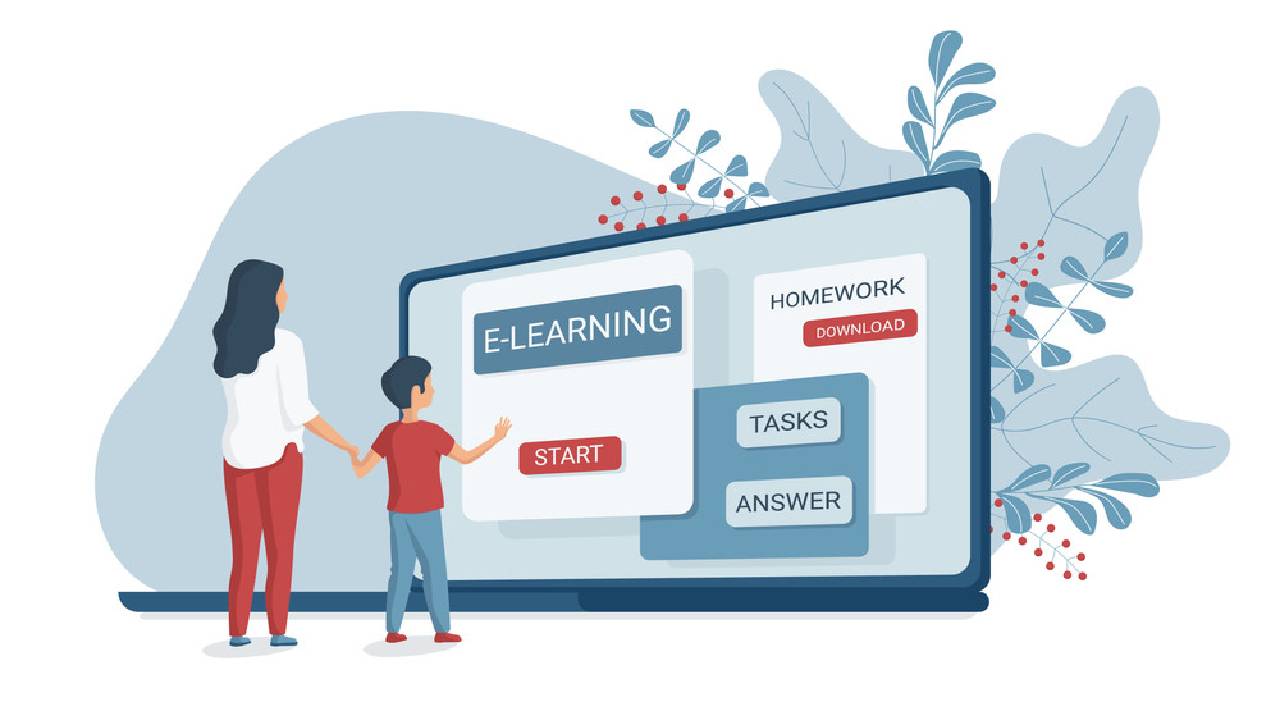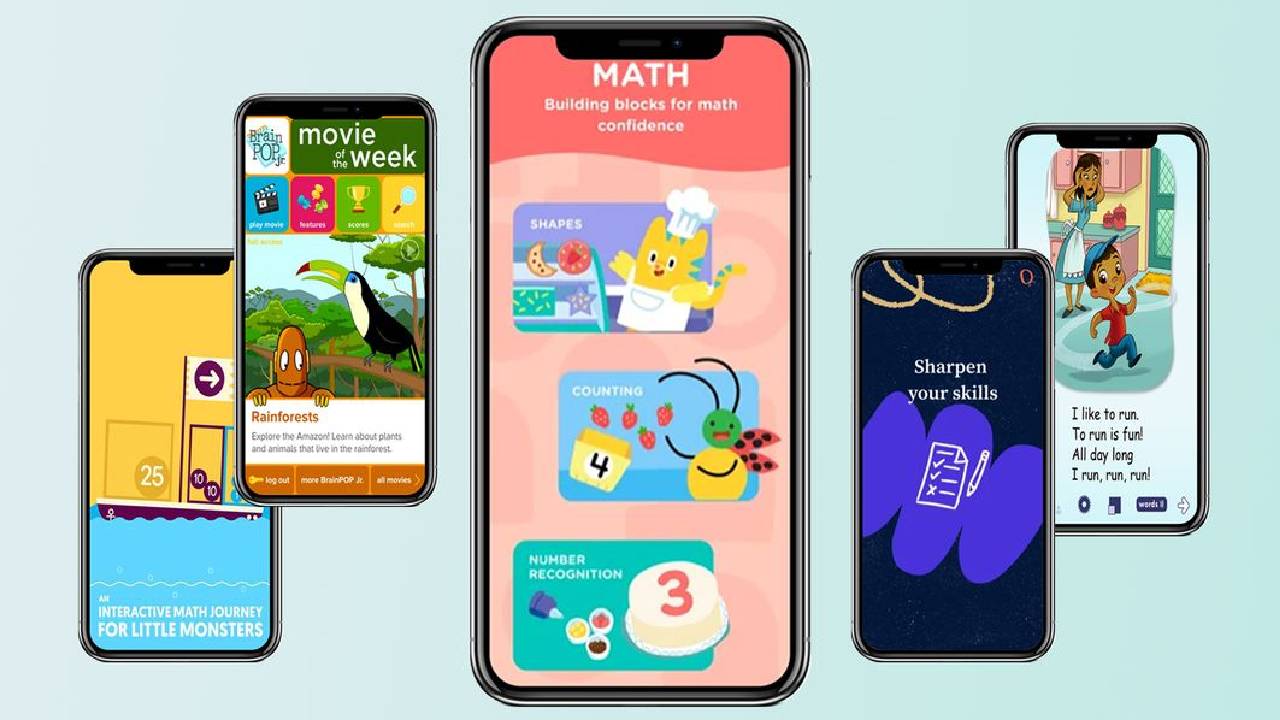In this parent’s guide, we will explore the fascinating world of screen time and its effect on kids. Screen time recommendations by age will be at the heart of our discussion, focusing on how much time children of different ages can safely spend engaging with digital devices.
As parents, understanding screen time recommendations by age is crucial for our children’s well-being and development. Actively participating in their digital experiences allows us to strike a balance that fosters healthy growth and nurtures their love for learning and exploration.
So, let’s embark on this journey together, discovering the impact of screen time and empowering ourselves with valuable insights and practical strategies to guide our children through the digital landscape.
Understanding Screen Time
In today’s digital world, understanding screen time recommendations by age is crucial for parents and caregivers. It encompasses the time spent on electronic devices like smartphones, tablets, computers, and televisions. Balancing screen time with other activities is vital for promoting healthy development and overall well-being in both children and adults.

First of all, let’s understand what screen time is and the different types of devices kids use.
Defining Screen Time: Types and Devices
Screen time means the total time children spend interacting with digital devices, like smartphones, tablets, computers, TVs, and game consoles. There are two main types of screen time: active and passive.
Busy screen time is when kids play games or use apps that need them to be physically involved. Passive screen time is when they watch videos or shows without actively participating.
Examples of digital devices include phones, tablets, computers, and TVs. Next, let’s look at the recommended screen time for kids of different ages according to the American Academy of Pediatrics.
Recommended Screen Time Guidelines for Different Age Groups
Screen time recommendations by age are essential to ensure kids have a balanced digital experience while growing up healthy. The American Academy of Pediatrics (AAP) gives some helpful guidelines based on children’s ages:
- Toddlers (18 to 24 months): Avoid screen time, except for video chatting with family.
- Preschoolers (2 to 5 years): Limit screen time to one hour of educational content each day, with parents supervising.
- School-Age Children (6 to 12 years): Use screen time for educational and fun activities while making sure it doesn’t get in the way of schoolwork, exercise, and sleep.
- Teenagers (13 to 18 years): Balance screen time with other important things like school, exercise, and face-to-face time with friends.
Understanding screen time recommendations by age empowers parents to ensure a positive technology experience for their kids. Striking a balance between screen time and other essential aspects of life, such as outdoor play, schoolwork, and quality family time, fosters a healthy relationship with screens.
Remember, responsible and mindful use allows us all to enjoy screens in a positive and enriching manner! First and foremost, let’s explore the positive impact of screen time through educational content and learning opportunities.
The Good: Positive Aspects of Screen Time
Screen time can have positive effects, such as providing access to educational content and enhancing learning opportunities. It also fosters skill development, cognitive benefits, and virtual socialization, promoting connectivity with others. When used mindfully and in moderation, screens can be valuable tools for growth and enrichment in the digital age.

Educational Content and Learning Opportunities
Screen time can offer a treasure trove of educational content and exciting learning opportunities for children of all ages. Many apps, websites, and videos are specifically designed to teach kids new skills, enhance their knowledge, and make learning fun.
Interactive educational games aligning with screen time recommendations by age can enhance skills in math, reading, science, and problem-solving. Younger children benefit from engaging apps teaching letters, numbers, colors, and shapes, fostering curiosity and laying a strong foundation for their academic journey.
Additionally, screen time can promote skill development and cognitive benefits in various ways.
Skill Development and Cognitive Benefits
Following screen time recommendations by age, children can benefit from the development of essential skills and cognitive advantages. Engaging in certain games and activities challenges children’s memory, attention, and critical thinking abilities.
For instance, puzzle games enhance problem-solving skills and spatial awareness, contributing to well-rounded cognitive development. As parents, nurturing these essential parenting skills is vital for their overall growth and success.
Creativity can flourish through digital art and storytelling apps. Additionally, some educational shows can improve language skills, vocabulary, and even cultural awareness.
Moreover, screen time can foster virtual socialization and connectivity, helping kids stay connected with loved ones.
Virtual Socialization and Connectivity
In a world where distance can sometimes separate us, screen time offers the advantage of virtual socialization and connectivity. Kids can use video chat apps to talk to relatives and friends far away, strengthening family bonds and friendships.
Social media platforms can provide positive interactions and support for teenagers, enabling them to connect with like-minded individuals and build a sense of belonging.
While enjoying the positive aspects of screen time, it’s essential to follow the recommended screen time guidelines by age.
Following screen time recommendations by age, parents can ensure their children enjoy these positive aspects while maintaining a healthy balance with outdoor play, reading, and face-to-face interactions. Thoughtful and purposeful screen time becomes a valuable tool in children’s learning and development journey, enriching their overall growth.
The Bad: Negative Effects of Excessive Screen Time
Adhering to screen time recommendations by age is essential to avoid the negative consequences of excessive use. These consequences may include physical health concerns like a sedentary lifestyle and eye strain. Additionally, psychological implications, such as social withdrawal and behavioral issues, can arise.
Moreover, screen time before bedtime can disrupt sleep patterns, impacting mood, attention, and overall well-being negatively.

Firstly, let’s explore the physical health concerns associated with excessive screen time.
Physical Health Concerns
Excessive screen time can lead to various physical health concerns for children. Prolonged periods of sitting while using electronic devices can contribute to a sedentary lifestyle, which may increase the risk of obesity and related health issues.
Additionally, staring at screens for extended periods can cause eye strain and discomfort, known as digital eye strain or computer vision syndrome. This condition may lead to symptoms like dry eyes, headaches, and blurry vision.
Moreover, excessive screen time before bedtime can disrupt the body’s natural circadian rhythm, affecting sleep quality.
Next, let’s discuss the psychological and behavioral implications of excessive screen time.
Psychological and Behavioral Implications
Excessive screen time can lead to psychological and behavioral implications for children, impacting their ability to become well-behaved individuals.
Prolonged screen use may decrease face-to-face social interactions, crucial for emotional development and building interpersonal skills. As parents, it’s vital to find a healthy screen-time balance to foster well-rounded and socially adept children.
Children may become irritable or have difficulty managing their emotions if screen time is not well-regulated. Additionally, excessive exposure to certain content, such as violent video games or inappropriate online materials, can negatively impact a child’s emotional well-being and behavior.
Lastly, we’ll examine the impact of excessive screen time on children’s sleep patterns.
Impact on Sleep Patterns
Excessive screen time, especially before bedtime, can disrupt children’s sleep patterns. The blue light emitted by screens can interfere with the production of melatonin, a hormone that regulates sleep. This can make it harder for children to fall asleep and result in shorter and less restful sleep.
Poor sleep can affect their mood, attention span, and overall well-being, leading to difficulties in school and daily activities.
To avoid the negative effects of excessive screen time, parents need to follow the recommended screen time guidelines by age.
Encouraging a healthy balance between screen time and other activities like outdoor play, reading, and spending time with family and friends can help children thrive both physically and emotionally. By being mindful of screen time usage, parents can ensure that their children’s digital experiences contribute positively to their overall well-being.
Striking a Balance: Creating a Healthy Screen Time Routine
Creating a healthy screen time routine involves setting realistic limits based on screen time recommendations by age. It includes establishing screen-free zones and activities, encouraging outdoor play, and balancing digital engagement with other enriching pursuits. By striking this balance, parents can foster positive screen habits and overall well-being for their children.

Let’s begin by exploring the importance of setting realistic screen time limits.
Setting Realistic Screen Time Limits
Setting realistic screen time limits is essential to ensure that children have a healthy digital experience. Parents can follow the screen time recommendations by age provided by experts to determine appropriate time limits for their kids.
Communicate these limits clearly and involve children in the process to foster a sense of ownership and responsibility. Using timers or setting up parental control tools can help enforce these limits effectively. It’s crucial to be consistent and encourage children to self-regulate their screen time as they grow older.
Additionally, let’s discuss the benefits of establishing screen-free zones and activities.
Establishing Screen-Free Zones and Activities
Creating designated screen-free zones and activities in the house can help children balance their digital engagement with other aspects of life. Designate areas like the dining table, bedrooms, or family gathering spaces as screen-free zones.
This ensures that mealtimes and family interactions remain screen-free, promoting quality bonding time. Encourage engaging screen-free activities like reading books, playing board games, or pursuing hobbies to foster creativity and imagination.
Lastly, let’s explore the importance of encouraging outdoor and physical play to complement screen time.
Encouraging Outdoor and Physical Play
Encouraging outdoor and physical play is crucial in maintaining a healthy balance between screen time and physical activity. Allocate time for children to play outdoors regularly, engaging in sports, running, cycling, or simply exploring nature.
Physical activities not only contribute to overall health but also enhance cognitive abilities and boost mood. Encourage children to participate in extracurricular activities, such as sports teams or dance classes, to broaden their interests beyond screens.
By implementing these strategies, parents can create a healthy screen time routine for their children. Finding the right balance between screen time and other activities fosters a well-rounded development and ensures that technology remains a positive addition to their lives. Remember, as parents, you play a vital role in guiding your children to make responsible choices and nurturing their growth in the digital world.
Age-Appropriate Content and Apps
Age-appropriate content and apps are essential for children’s digital experiences. They align with screen time recommendations by age, offering educational and entertaining content suitable for their developmental stage. Parents can ensure a safe and enriching digital environment by selecting content that matches their child’s age, interests, and learning needs.

Let’s start by understanding how to identify high-quality educational content for your child’s screen time.
Identifying High-Quality Educational Content
When it comes to screen time, parents can make a significant impact by ensuring their children have access to high-quality educational content. Look for apps, websites, and videos that are specifically designed for learning and skill development.
Many reputable educational apps offer interactive activities that align with the screen time recommendations by age, helping children learn at their own pace. Seek content that is engaging, age-appropriate, and aligned with your child’s interests and academic needs.
Reading reviews and checking for educational endorsements can help identify trustworthy sources of educational content. Additionally, let’s explore the importance of parental controls and app restrictions in managing screen time.
Parental Controls and App Restrictions
In the digital age, parental controls and app restrictions can be valuable tools for managing children’s screen time. Parents can use these features to limit access to age-inappropriate content, set daily time limits, and manage app downloads.
Parental control settings are available on most devices and platforms, allowing parents to monitor and regulate their child’s digital experiences. By using these controls wisely, parents can create a safe and age-appropriate digital environment for their children.
By proactively identifying high-quality educational content and utilizing parental controls, parents can ensure that their children have a positive and enriching screen time experience.
A well-curated selection of educational apps and age-appropriate content can contribute to their learning journey and help them thrive in the digital world. Remember, with a thoughtful and informed approach, screen time can become a valuable tool for your child’s growth and development.
Screen Time and Academic Performance
Screen time can impact academic performance positively or negatively. Mindful use of educational content can complement learning, while excessive screen time may lead to decreased focus and time management challenges. By balancing screen time with academic responsibilities, parents can support their child’s overall academic success and well-being.

First, let’s delve into the link between screen time and academic performance to gain valuable insights.
Exploring the Link Between Screen Time and School Achievement
Understanding the connection between screen time and academic performance is essential for parents who want to support their child’s educational journey.
Research has shown that excessive screen time, especially for younger children, can negatively impact their academic achievement. Excessive screen time may lead to reduced attention spans, decreased focus on schoolwork, and potential challenges in time management.
However, it’s important to note that not all screen time is harmful. When used purposefully and in moderation, educational content and interactive learning apps can complement classroom learning and enhance a child’s understanding of various subjects.
Next, let’s explore effective strategies for managing screen time and academic responsibilities.
Strategies for Balancing Screen Time and Academic Responsibilities
To strike a balance between screen time and academic responsibilities, parents can implement practical strategies tailored to their child’s age and school requirements. Follow the screen time recommendations by age to set appropriate limits on recreational screen time.
Designate specific periods for homework and studying without any digital distractions. Encourage a structured routine that includes time for both learning and leisure, allowing children to focus on their academic tasks without feeling overwhelmed by screens.
Furthermore, engaging in discussions with teachers and school staff can provide valuable insights into how to create a balanced approach to screen time that complements academic progress.
By understanding the impact of screen time on academic achievement and implementing strategies to create a healthy balance, parents can support their child’s academic success.
Encouraging purposeful and educational screen time while managing recreational screen time responsibly can foster a positive relationship with technology and its role in their learning journey. Remember, a thoughtful approach to screen time can contribute to a well-rounded and successful academic experience.
The Role of Parental Involvement
Parental involvement is crucial in managing children’s screen time effectively. Being informed about technology and setting realistic limits based on screen time recommendations by age fosters responsible digital habits. By leading by example, communicating openly, and engaging in family activities, parents create a positive environment for their child’s digital growth.

Let’s begin by understanding the role of parental involvement in the digital age and its significance.
Parenting in the Digital Age
Parenting in the digital age comes with unique challenges and responsibilities. Parents need to stay informed about the latest technologies and trends to guide their children effectively.
Educate yourself about the positive and negative aspects of screen time, and familiarize yourself with the screen time recommendations by age to set appropriate limits for your child.
Be an active participant in their digital experiences by exploring apps, websites, and content together, ensuring that they engage with age-appropriate and educational material.
Additionally, let’s explore the significance of effective communication and limit setting in managing screen time.
Effective Communication and Limit Setting
Open and effective communication is crucial for managing screen time in the family. Engage in conversations with your child about the importance of responsible screen time and the potential impact of excessive use. Set clear and reasonable limits on screen time, explaining the reasons behind these restrictions.
Involve your child in the process, encouraging them to be responsible for managing their screen time as they grow older. Be consistent in enforcing the rules and lead by example by modeling healthy screen time habits yourself.
By actively participating in their digital experiences and maintaining open communication, parents can play a vital role in shaping their child’s relationship with screens. Through informed guidance and responsible limit setting, parents can help their children navigate the digital world in a safe and balanced manner.
Remember, your involvement as a parent is instrumental in nurturing a positive and purposeful approach to screen time, creating a foundation for healthy living habits that will benefit your child in the long run.
Leading by Example: Managing Your Own Screen Time
Leading by example is vital in teaching children responsible screen time habits. By modeling healthy screen time behavior, parents demonstrate the importance of balance and mindful technology use. Being aware of their own screen time and prioritizing quality family interactions helps guide children toward a positive and responsible digital experience.

Let’s explore the significance of modeling healthy screen time behavior and its impact on children.
Modeling Healthy Screen Time Behavior for Children
As parents, leading by example is one of the most effective ways to instill responsible screen time habits in children. Be mindful of your screen time usage and how it may influence your child’s perception of technology.
Demonstrate healthy screen time behavior by setting aside designated times for digital engagement and adhering to the screen time recommendations by age. Prioritize face-to-face interactions, family activities, and outdoor play to show your child that screens are just one part of a balanced lifestyle.
When you prioritize quality time over excessive screen time, you send a powerful message about the importance of finding balance in the digital age.
By modeling healthy screen time behavior, parents can create a positive and supportive environment for their children to develop responsible technology habits. Your actions and choices serve as a guiding light for your child as they navigate the digital world.
Remember, your commitment to balanced screen time sets the foundation for your child’s lifelong relationship with technology, ultimately influencing their well-being and growth in a digital-driven society.
Red Flags: Recognizing and Addressing Screen Time Addiction
Recognizing red flags of screen time addiction is crucial for parents to address potential issues. Signs like increased agitation, neglecting responsibilities, social withdrawal, sleep disturbances, and declining academic performance may indicate dependency. By identifying these signs early and implementing coping strategies or seeking professional help, parents can ensure a healthy digital balance for their children.

Let’s begin by understanding the signs of excessive screen time dependency that parents should be aware of.
Signs of Excessive Screen Time Dependency
Recognizing the signs of excessive screen time dependency is crucial for parents to address potential issues early on. Some red flags to watch out for include:
- Increased Agitation: Children may become irritable or agitated when asked to stop using screens or reduce screen time.
- Neglecting Responsibilities: If screen time takes precedence over schoolwork, chores, or other important activities, it may indicate dependency.
- Social Withdrawal: Excessive screen time can lead to a decline in face-to-face social interactions and a preference for digital communication.
- Sleep Disturbances: Screen time before bedtime can disrupt sleep patterns, leading to difficulty falling asleep or restless nights.
- Decline in Academic Performance: If a child’s grades start to suffer due to excessive screen time, it could be a sign of dependency.
Next, let’s explore coping strategies and when to seek professional help to address screen time addiction.
Coping Strategies and Seeking Professional Help
Addressing screen time addiction requires a multi-faceted approach, involving coping strategies and, in severe cases, seeking professional help. Parents can implement the following strategies:
- Establish Clear Limits: Set clear and consistent screen time limits, gradually reducing excessive usage.
- Encourage Healthy Alternatives: Promote alternative activities like outdoor play, reading, hobbies, and family bonding time.
- Create Screen-Free Zones: Designate areas in the home where screens are not allowed, encouraging digital detox during meals and family time.
- Be an Engaged Role Model: Demonstrate healthy screen time behavior and actively engage in non-digital activities with your child.
If you observe persistent and severe signs of screen time addiction, consider seeking professional help from a pediatrician, psychologist, or counselor specializing in technology-related concerns. They can provide personalized guidance and support to address underlying issues and develop effective coping strategies.
Recognizing the signs of excessive screen time dependency and following appropriate screen time recommendations by age can help parents guide their children to a healthier digital lifestyle. Implementing coping strategies and seeking professional help when necessary can prevent severe consequences and promote overall well-being.
Remember, open communication and a supportive approach are vital in addressing screen time addiction and fostering a balanced digital lifestyle for your child.
Alternative Activities for Children
Engaging children in alternative activities beyond screens is essential for their well-rounded development. Hobbies and creative pursuits nurture their talents and imagination while reading and outdoor exploration enhance learning and appreciation for nature. These screen-free activities create cherished family moments and promote a balanced and enriching childhood experience.

Let’s start by exploring the importance of hobbies and creative pursuits as alternatives to screen time.
Engaging in Hobbies and Creative Pursuits
Encouraging children to engage in hobbies and creative pursuits is a wonderful way to balance screen time with enriching activities. Hobbies can vary based on a child’s interests and talents.
Whether it’s painting, drawing, playing a musical instrument, or building with Lego, hobbies foster creativity, problem-solving skills, and a sense of accomplishment. By dedicating time to pursue hobbies, children can discover their passions and develop new skills, all while enjoying screen-free experiences.
Additionally, let’s discuss the significance of encouraging reading and outdoor exploration as alternative activities to screen time.
Encouraging Reading and Outdoor Exploration
Promoting reading and outdoor exploration offers children valuable opportunities for learning and discovery beyond screens. Encourage a love for reading by providing age-appropriate books and spending quality time reading together.
Books open up new worlds, spark imagination, and improve language and cognitive skills. Outdoor exploration allows children to connect with nature, stay active, and engage their senses. Encourage outdoor play, nature walks, or visits to parks to foster a sense of wonder and appreciation for the world around them.
By actively encouraging alternative activities like hobbies, creative pursuits, reading, and outdoor exploration, parents can provide children with a diverse range of experiences that go beyond screens.
These activities contribute to their development, nurture their interests, and promote a healthy balance in their digital lifestyle. Remember, by fostering a love for both digital and non-digital pursuits, parents can help their children thrive in a well-rounded and fulfilling way.
Family Bonding in a Digital World
Family bonding in a digital world involves creating meaningful connections amidst screen time challenges. By designating screen-free times and engaging in fun activities together, families can strengthen their relationships. Open communication and shared experiences promote a warm and loving family environment, nurturing emotional well-being in the digital age.

Let’s begin by understanding the importance of nurturing family relationships despite the challenges of screen time.
Nurturing Family Relationships Amidst Screen Time Challenges
In today’s digital world, nurturing family relationships requires a thoughtful approach to balancing screen time with quality family bonding. Create designated screen-free times or zones where the entire family can come together without any digital distractions.
During meal times, encourage everyone to put away their devices and engage in meaningful conversations. Set aside dedicated family time to participate in activities that strengthen connections, such as playing board games, cooking together, or going on family outings.
Engaging in open communication and actively listening to each other’s experiences can also foster a deeper sense of closeness. Additionally, let’s explore some fun screen-free activities that the whole family can enjoy together.
Fun Screen-Free Activities for the Whole Family
Enjoying fun screen-free activities as a family can create cherished memories and strengthen the bond between parents and children. Consider engaging in activities like:
- Outdoor Adventures: Plan hikes, picnics, or bike rides in nature to enjoy the outdoors together.
- Creative Arts: Participate in art projects, craft activities, or DIY projects that encourage creativity and collaboration.
- Family Movie or Game Nights: Have dedicated movie or game nights where the whole family can watch a movie or play board games together.
- Cooking and Baking: Involve the whole family in cooking or baking sessions, trying out new recipes and enjoying the delicious results.
By nurturing family relationships amidst screen time challenges and participating in fun screen-free activities, families can create a stronger bond and sense of togetherness. Emphasizing shared experiences and meaningful connections over screen time can create a warm and loving family environment.
Remember, building cherished memories as a family is a beautiful way to navigate the digital world while staying connected in the most meaningful way.
Screen Time and Mental Health
Screen time can impact children’s mental health positively or negatively. Excessive screen use may lead to loneliness, anxiety, and depression, while mindful screen time can promote emotional well-being. Encouraging purposeful digital engagement, setting limits, and fostering open discussions about online safety can help support children’s mental health in the digital era.

Let’s begin by exploring the link between screen time and emotional well-being, and how it can affect children’s mental health.
The Connection Between Screen Time and Emotional Well-being
Understanding the connection between screen time and mental health is crucial for parents to prioritize their child’s emotional well-being. Excessive screen time, especially when used for non-educational or inappropriate content, can lead to feelings of loneliness, anxiety, and depression.
Social media, in particular, may contribute to negative self-comparisons and cyberbullying experiences, affecting a child’s self-esteem. Moreover, prolonged exposure to screens, especially before bedtime, can disrupt sleep patterns, which can further impact mood and emotional stability.
Additionally, let’s explore strategies to promote mental health through mindful screen time practices.
Promoting Mental Health through Mindful Screen Time
Promoting mindful screen time habits can positively impact children’s mental health. Parents can encourage their children to engage in purposeful and educational screen time while avoiding excessive recreational use. Encourage them to take regular breaks during screen time to engage in physical activities or relax with a book.
Teach them to recognize when screen time is causing negative emotions and to seek healthy coping mechanisms, such as talking to a trusted adult or participating in enjoyable offline activities.
By understanding the connection between screen time and mental health and promoting mindful screen time practices, parents can support their child’s emotional well-being.
Emphasizing the importance of balanced digital engagement and guiding them to use screens thoughtfully can contribute to a positive and emotionally healthy experience with technology. Remember, nurturing mental health is a priority, and a mindful approach to screen time is one step toward achieving this goal.
Parental Control Tools and Apps
Parental control tools and apps empower parents to manage their child’s screen time effectively. These tools allow for setting age-appropriate restrictions, blocking inappropriate content, and monitoring online activities.
By utilizing them responsibly, parents can create a safer digital environment and guide their children to develop responsible and balanced screen time habits.

Let’s begin with an overview of parental control software and its functionalities to ensure safer and more responsible screen time.
Overview of Parental Control Software
Parental control software provides parents with valuable tools to manage and monitor their child’s screen time and online activities. These apps and software allow parents to set screen time limits, block inappropriate content, and track their child’s digital usage.
Many parental control tools offer age-specific settings aligned with the screen time recommendations by age, making it easier for parents to establish appropriate restrictions based on their child’s developmental stage.
Some parental control apps also provide real-time alerts and activity reports, enabling parents to stay informed about their child’s online behavior.
Additionally, let’s explore how to use parental control apps effectively to foster a safer digital experience for children.
How to Use Parental Control Apps Effectively
To utilize parental control apps effectively, ensure to set up appropriate restrictions and monitor your child’s digital activities responsibly. Here are some tips for the efficient use of these tools, following screen time recommendations by age:
- Customize Settings: Tailor the parental control settings to match your child’s age and needs, ensuring the restrictions are age-appropriate.
- Communication and Transparency: Communicate with your child about the importance of using parental control tools to create a safe online environment.
- Balanced Approach: While using parental control apps, also emphasize the importance of responsible digital behavior and encourage open discussions about online safety.
- Regular Review: Periodically review the settings and activities tracked by the parental control app to ensure they remain suitable for your child’s age and maturity.
By utilizing parental control software and apps effectively, parents can play an active role in guiding their child’s digital experiences and promoting a safer and more responsible online environment.
By integrating these tools with open communication and appropriate screen time recommendations by age, parents can confidently navigate the digital world and offer their children a secure and enriching online experience.
Remember, parental control apps are valuable aids in fostering a balanced approach to technology while ensuring a safer digital journey for your child.
Conclusion
In conclusion, understanding the impact of screen time on kids is crucial for parents in today’s digital age. By following age-appropriate screen time recommendations, parents can ensure that their children have a healthy and balanced relationship with technology.
We have explored the positive aspects of screen time, such as educational content and virtual connectivity, while also acknowledging the potential negative effects of excessive use on physical and mental well-being.
By setting an example, establishing clear limits, and encouraging alternative activities, parents create a nurturing environment that fosters healthy screen time habits and strengthens family bonds.
Remember, being mindful of our children’s digital experiences and adhering to appropriate screen time recommendations by age empower them to thrive in a digital world while nurturing their overall development.
We encourage you to leave your feedback in the comments and share this valuable information with your friends, so we can all support our children’s well-being in the digital era. Together, we can shape a positive and balanced future for our kids!















































